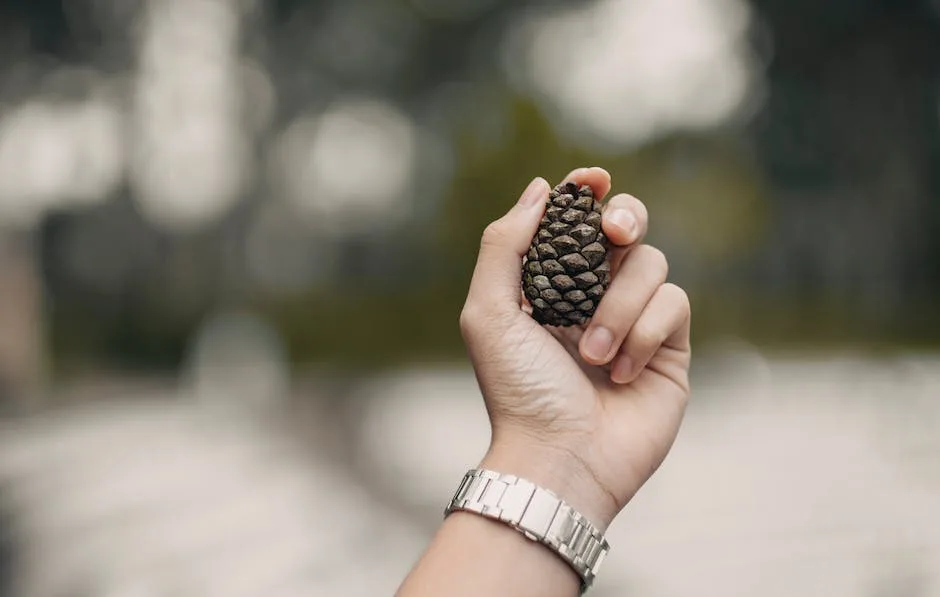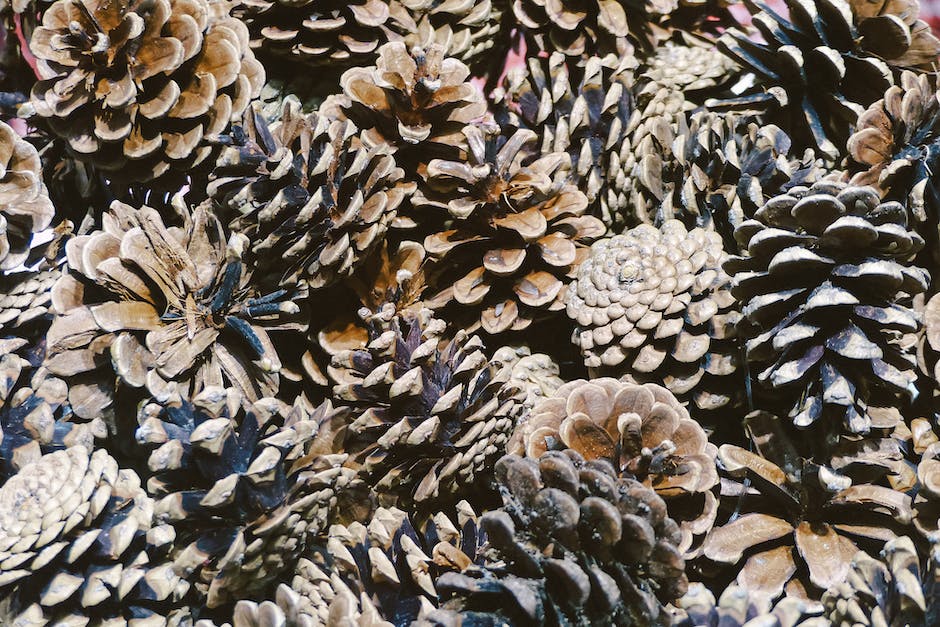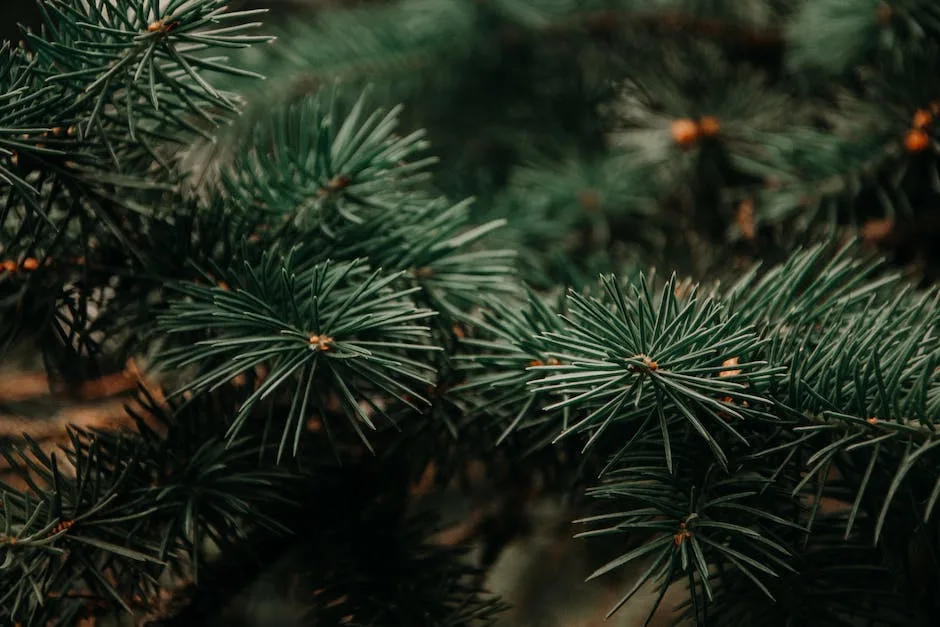The seeds of a pine tree are dispersed by the wind. The pine tree produces a cone, which contains the seeds. The cone opens and the seeds are blown away by the wind.
The seeds of a pine tree are referred to as pine nuts. Pine nuts are typically dispersed by birds and squirrels who eat the cones and deposit the seeds in other areas.
What are two ways in which pine seeds are dispersed?
Pine seeds can be dispersed in a few different ways. Sometimes, if the seeds have papery wings, they can be caught by the wind and blown around. Water currents can also carry seeds across water bodies like oceans, lakes, and rivers, and they can end up on shores where they can grow. Additionally, manual dispersing is done, where humans plant pine seeds.
Pollen is carried from the male cones of one tree to the female cones of another by wind currents. This completes the first step of reproduction. The second step is when the female cones have been pollinated and they produce fertile seeds within the closed cone. This process takes about two years to complete.
How is pollen dispersed in pine trees
Pine pollen can be a real problem for people with seasonal allergies. It is dispersed by the wind and can travel up to 300 feet from the original tree. If you suffer from seasonal allergies, it is best to avoid pine trees during the spring.
Pine seeds can be dispersed in multiple ways, including by animals, wind, and water. Animals may eat pine seeds and spread them around by defecating them and letting them grow. Sometimes if the pine seeds are in a windy environment, they can be blown around and spread. Some are dispersed by water.
Are pine seeds dispersed by wind?
Pine seeds are dispersed by wind because they are light weight and have a wing structure. This allows them to travel great distances.
Seeds can be dispersed in a number of ways, depending on the plant species. Some common methods of seed dispersal include wind, water, animals and birds, gravity, and explosions.
Wind dispersal is often used by lighter seeds, such as those of dandelions and milkweed. The seeds are equipped with a fluffy white tuft that allows them to be carried away by the wind.
Water dispersal is used by plants that grow near water, such as mangroves and lotus. The seeds float on the water until they reach a suitable location to germinate.
Animals and birds dispersal is used by a variety of plants, such as berries and dispersal fruits. The fruits are eaten by the animals or birds, who then excrete the seeds in a new location. This method of dispersal often results in the seed being deposited in a location with ideal conditions for germination, such as in a pile of manure.
Gravity dispersal is used by plants with heavy seeds, such as acorns and coconuts. The seeds fall to the ground and are then transported away by animals or water.
Explosions dispersal is used by plants with very small seeds, such as
Where do pine tree seeds come from?
Pine cones are the reproductive organs of pine trees and grow directly on the tree. There are male and female cones, with the former producing pollen and the latter the ovules. The cones are typically born on the same tree, with the male cones on the lower branches.
One of the key distinguishing features of pine seeds that are dispersed by animals compared to those that are dispersed by wind is the size of the seed. Pine seeds that are dispersed by animals tend to be much larger than those dispersed by wind. This is likely due to the fact that animals can carry more weight and thus can transport larger seeds. Another key distinguishing feature is the presence or absence of a wing. Pine seeds that are dispersed by wind typically have a thin wing that helps them to float and be carried by the wind. Pine seeds dispersed by animals, on the other hand, do not have a wing and instead rely on the animal to transport them.
Why do pine trees split into two
Double-topping is a condition that can afflict trees after they have been damaged, typically by storms. In this condition, multiple branches compete to become the new top of the tree, causing a fork. This can weaken the tree and make it more susceptible to further damage.
Pine trees are interesting because they are conifers (cone bearing) and carry both male and female sporophylls on the same mature sporophyte. This makes them monoecious plants. Like all gymnosperms, pines are heterosporous, generating two different types of spores: male microspores and female megaspores. This is an efficient way for these plants to reproduce since both sexes are contained within each mature sporophyte.
What kind of asexual reproduction is pine tree?
This is a method for asexually propagating pine trees by vegatative propagation. In this method, pine seedlings are hedged by severing the main stem and detaching the branches so that only one lateral branch is left intact and attached to the remaining main stem. This allows the pine tree to grow new branches and roots, which can then be used to propagate the tree.
Pine pollen is produced when the trees reproduce in the springtime. It is possible for pollen to travel very long distances in the air. Pine pollen can cause allergies in some people and can also be used as a dietary supplement.
What are 3 adaptations of a pine tree
Pine and fir plants are cone-shaped with sloping branches which help rainwater and snow to slide off easily. They have needle-like leaves which help them to give a cone-like shape. They shed off their leaves during winters when it snows and reduces their activity.
There are five main modes of seed dispersal: gravity, wind, ballistic, water, and by animals. Some plants are serotinous and only disperse their seeds in response to an environmental stimulus, such as a fire.
Which tree seeds are dispersed by wind?
Maple seeds dispersal by wind is a fascinating process. The wing-like outgrowth on the seeds helps them to float in the air and travel long distances. This method of dispersal is very efficient and allows the seeds to colonize new areas quickly.
Pine nuts are a type of nut that comes from pine cones. There are only 20 varieties of pine tree in the world that produce cones with pine nuts large enough to be harvested. Pine nuts are a common ingredient in many cuisines, and they can be eaten raw, roasted, or used in a variety of recipes.
What is the seed of pine tree called
Pine nuts are a type of seed that comes from pine trees. They are often used in cooking and baking as a type of flour, as well as in many traditional dishes. Pignoli, piñons, and pinyons are all different names for pine nuts. These edible seeds are sold commercially and are produced by several different types of pine trees.
1) Gravity seed dispersal is a type of seed dispersal where the seeds are released from the parent plant and drop to the ground below. This type of dispersal is often seen in plants with large, heavy seeds, such as Oaks and Maple trees.
2) Animal transportation, consumption and seed dispersal is a type of seed dispersal where the seeds are eaten by animals and then either transported to a new location or left behind in their droppings. This type of dispersal is often seen in fruits and berries that are eaten by birds.
3) Fur and feather hitch hiking adaptations (such as hooks, barbs & spines) is a type of seed dispersal where the seeds hitch a ride on the fur or feathers of animals. This type of dispersal is often seen in plants that grow in areas with a lot of animal traffic, such as along trails or near bird feeders.
4) Ballistic seed dispersal that releases seeds through explosive dehiscence is a type of seed dispersal where the seeds are contained within a pod or structure that bursts open when it hits the ground, releasing the seeds. This type of dispersal is often seen in plants that have dry, papery fruits, such as Dandel
What seeds are dispersed by water
Many marine, beach, pond, and swamp plants have waterborne seeds, which are buoyant by being enclosed in corky fruits or air-containing fruits or both; examples of these plants include water plantain, yellow flag, sea kale, sea rocket, sea beet, and all species of Rhizophoraceae, a family of mangrove plants. This means that these plants can disperse their seeds over long distances by water, which is an important mechanism for plant dispersal and spread.
Moving seeds around is known as dispersal. When you blow on a dandelion, you are helping to disperse the dandelion seeds. This usually happens with the help of wind. Wind helps move seeds from one place to another.
Does a pine tree have unprotected seeds
Pine trees are a type of gymnosperm, which means that their seeds are not encased within an ovary. This is why pine cones are often used as a symbol for this type of tree. gymnosperm literally means “naked seeds”, and these types of plants often have seeds that are formed into cone shapes.
Pinecones are an important part of the life cycle of a pine tree. Once full grown, each cone contains enough seeds to grow a new pine tree. The average pinecone contains about 150 seeds, but some cones from specially-bred trees can produce even more. After a year-and-a-half of growing on the tree, these pinecones are full grown and ready to release their seeds.
What are the seeds of Christmas or pine trees called
Gymnosperms are seed-producing plants that grow naked seeds, as opposed to angiosperms, which produce seeds enclosed in an ovary. Conifers, such as pines, spruces, and firs, are the best-known gymnosperms.
A pine cone is a woody, brown cone that produces two seeds beneath each scale. These seeds will remain in the cone until it dries out and opens up completely. The seed in a pine cone can usually be identified by the prominent wing attached to the seed, which aids in dispersal.
Final Words
The seeds of a pine tree are dispersed by the wind.
There are many ways in which the seeds of a pine tree can be dispersed. One way is by the wind. The wind carries the seeds far away from the parent tree and allows them to find new places to grow. Another way is by animals. Animals such as birds and squirrels often eat the seeds and then disperse them in their droppings. This allows the seeds to be carried to new areas where they can germinate and grow into new pine trees.

My interest in trees started when I first saw the giant sequoias in Yosemite.
I was a teenager then, and I remember thinking, “I need to learn more about this.”
That moment stuck with me.
A few years later, I went on to study forestry at Michigan Tech.
Since graduating, I’ve worked in a mix of hands-on tree care and community education.
I’ve spent over ten years helping people understand how to plant, maintain, and protect the trees in their neighborhoods.
I don’t see trees as just part of the landscape.
They are living things that make a real difference in our daily lives.
